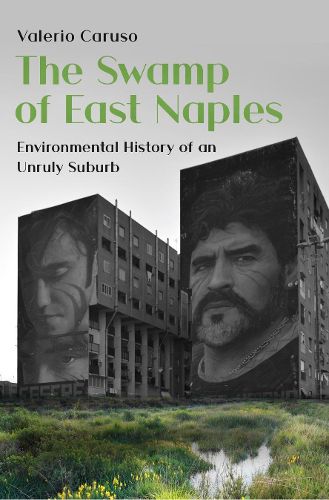Readings Newsletter
Become a Readings Member to make your shopping experience even easier.
Sign in or sign up for free!
You’re not far away from qualifying for FREE standard shipping within Australia
You’ve qualified for FREE standard shipping within Australia
The cart is loading…






This title is printed to order. This book may have been self-published. If so, we cannot guarantee the quality of the content. In the main most books will have gone through the editing process however some may not. We therefore suggest that you be aware of this before ordering this book. If in doubt check either the author or publisher’s details as we are unable to accept any returns unless they are faulty. Please contact us if you have any questions.
East Naples’ contemporary history is not special, or unique: its processes shaped a mostly grey suburb nestled in the immediate vicinity of the great southern city, sharing its limits and feeding its needs. An imaginary tourist would search in vain for the ancient natural landscape, formerly a splendid threshold between coastal and marshy ecosystems, now humiliated by the sedimentary accumulation of bricks, fumes, oil and poisons generated by the main actors of the area’s contemporary history - manufacturing and housing. Across the globe, peripheral areas have experienced the same deep environmental changes under the processes of energy transitions, economic development and urbanisation. The historian must interrogate the human choices, the material context and the different perceptions of nature, health or production that led to these changes as part of an environmentally-focused perspective on two of modernity’s distinctive global processes: industrialisation and deindustrialisation. The resultant narrative of relations between human choices and East Naples’ environmental limits is marked by the transition from an actual swamp to a metaphorical one, an ambiguous space characterised by chaos and disorder, hostility and risks, but also resistance, dignity and hope. This book reconstructs the discursive and physical factors that created the East Naples ‘swamp’, from the late eighteenth century to the present, analysing hygienist thought and urbanisation, industrialisation and deindustrialisation, ecological risks and urban requalification attempts.
$9.00 standard shipping within Australia
FREE standard shipping within Australia for orders over $100.00
Express & International shipping calculated at checkout
This title is printed to order. This book may have been self-published. If so, we cannot guarantee the quality of the content. In the main most books will have gone through the editing process however some may not. We therefore suggest that you be aware of this before ordering this book. If in doubt check either the author or publisher’s details as we are unable to accept any returns unless they are faulty. Please contact us if you have any questions.
East Naples’ contemporary history is not special, or unique: its processes shaped a mostly grey suburb nestled in the immediate vicinity of the great southern city, sharing its limits and feeding its needs. An imaginary tourist would search in vain for the ancient natural landscape, formerly a splendid threshold between coastal and marshy ecosystems, now humiliated by the sedimentary accumulation of bricks, fumes, oil and poisons generated by the main actors of the area’s contemporary history - manufacturing and housing. Across the globe, peripheral areas have experienced the same deep environmental changes under the processes of energy transitions, economic development and urbanisation. The historian must interrogate the human choices, the material context and the different perceptions of nature, health or production that led to these changes as part of an environmentally-focused perspective on two of modernity’s distinctive global processes: industrialisation and deindustrialisation. The resultant narrative of relations between human choices and East Naples’ environmental limits is marked by the transition from an actual swamp to a metaphorical one, an ambiguous space characterised by chaos and disorder, hostility and risks, but also resistance, dignity and hope. This book reconstructs the discursive and physical factors that created the East Naples ‘swamp’, from the late eighteenth century to the present, analysing hygienist thought and urbanisation, industrialisation and deindustrialisation, ecological risks and urban requalification attempts.